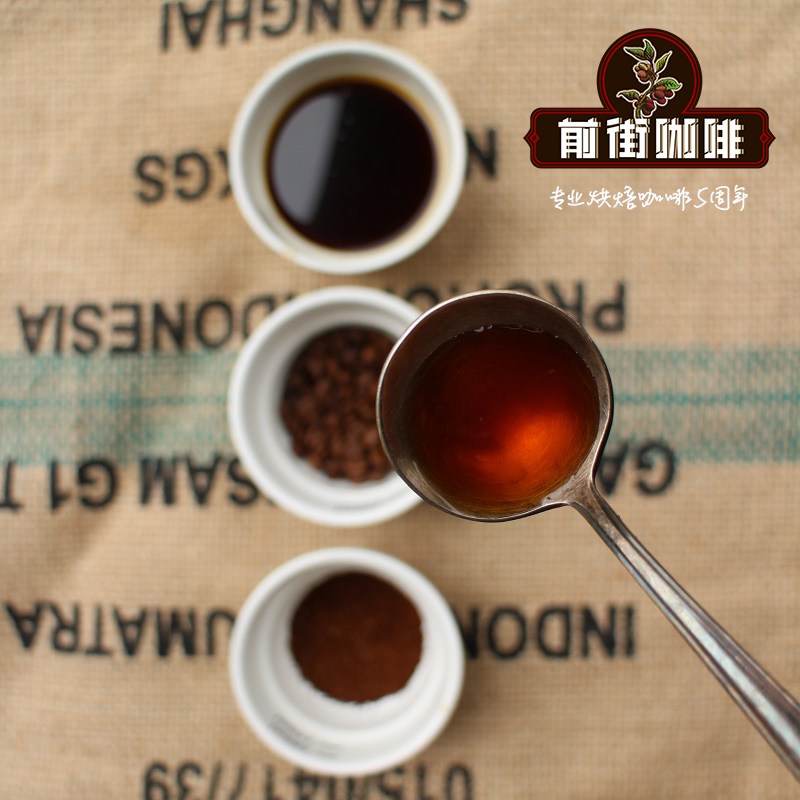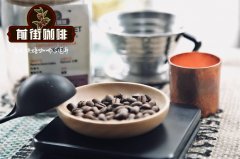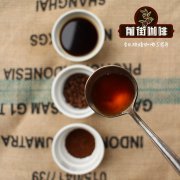Sensory characteristics and main chemical components of coffee with different roasting degree

Professional coffee knowledge exchange more coffee bean information please follow the coffee workshop (Wechat official account cafe_style)
Coffee is one of the most popular drinks in the world, and the most commercially valuable varieties are Arabica and Robst. In this paper, Yunnan Arabica coffee and Indian Robster coffee were selected as the representatives of the two species, the sensory profiles of two kinds of coffee with different roasting degrees were studied, and the main non-volatile components and aroma substances in coffee were determined. Then, the advantages and disadvantages of two sensory descriptive methods in coffee research were compared by multivariate statistical analysis, the effects of roasting degree on the sensory characteristics and chemical composition of coffee were analyzed, and the correlation between sensory quality and chemical composition was studied.
The main conclusions are as follows: the similarities and differences of the two sensory description methods of cobweb map (Spectrum) and rapid profile (FP) were compared from the aspects of sensory description words, flavor profile, sample classification and so on. Through the Spectrum method, 15 sensory descriptions of coffee were established, which were convenient for Chinese consumers to understand, and described the sensory characteristics of two kinds of coffee at different roasting degrees: coffee and green beans had strong grass flavor and raw bean flavor, and with the deepening of roasting degree, the nutty, roasted, rubber and scorched flavor increased. Compared with Yunnan coffee, Robst coffee has lighter color and weaker aroma, with typical mugi-cha taste and bitter taste. Through the FP method, 46 consumer words are generated, and the sensory profile of the sample is obtained, but the specific sample characteristics can not be described because of the difficulty in understanding the attributes in the diagram. The correlation coefficient of sensory profile generated by the two methods is only 0.353. When the sample difference is small and the sample quantity is large, the accuracy of FP is not high. Therefore, the data of Spectrum method are used for follow-up analysis.
Through the analysis of non-volatile components of two kinds of coffee with different roasting degrees, it was found that quinic acid and malic acid increased by more than 200% from green beans to low roasting, resulting in the decrease of coffee pH. Then, with the deepening of roasting degree, chlorogenic acid and citric acid decreased, resulting in the increase of pH value. The aroma components were determined by HS-SPME GC-MS, and the optimum extraction conditions were obtained as follows: CVB/CAR/PDMS30-50 μ m extraction head and 60 °C adsorption of 30min. A total of 126 volatile aroma components were detected, among which furans and pyrazines were the most. In deep roasting, furan and pyrazine account for about 40% and 10%, respectively. The total volatile substances of Yunnan coffee is more than 10% higher than that of Robst, and the total peak area of the two kinds of coffee increases sharply by more than 300% with the increase of roasting degree, indicating that a large number of volatile substances are produced in the roasting process. Furthermore, the relationship among coffee variety, chemical composition and sensory quality was established by PLS method. It was found that the main sensory properties to distinguish Yunnan coffee from Robst coffee were mugi-cha taste and bitterness, and the main chemicals were 2-methylbutyraldehyde, acetic acid and caffeine. The main sensory properties that distinguish green beans from roasted coffee beans are grass, raw bean, olfactory sour, roasted and nutty, and the main chemicals caproaldehyde, malic acid, 2meme, 5-trimethylpyrazine, 2-acetylfuran and so on. The main sensory properties of coffee beans with different roasting degrees (excluding green beans) were sour taste, scorched taste and irritating taste, and the main chemicals were citric acid, chlorogenic acid, furfuryl alcohol, pyridine, sulfur compounds, 2pentanedione and acetaldehyde.
Important Notice :
前街咖啡 FrontStreet Coffee has moved to new addredd:
FrontStreet Coffee Address: 315,Donghua East Road,GuangZhou
Tel:020 38364473
- Prev

Secret: coffee contains more caffeine. Is there more caffeine in dark coffee than light coffee?
Professional coffee knowledge exchange more coffee bean information Please pay attention to the coffee workshop (Wechat official account cafe_style) Coffee is almost an indispensable companion for modern people in the morning, without caffeine, the body does not seem to have entered the awake mode. But which kind of coffee bean has more caffeine? Let's take a look at today's report. Anyone, whether it's going through it over and over again, can't fall asleep.
- Next

Yunnan Coffee: exploring the Legend of Centennial Coffee in Zhukula Village, Yunnan small Coffee
Professional coffee knowledge exchange more coffee bean information Please follow Coffee Workshop (Wechat official account cafe_style) Coffee is one of the most popular drinks in the world, the most commercially valuable varieties are Arabica and Robst. In this paper, Yunnan Arabica coffee and Indian Robster coffee were selected as the representatives of the two species, and two kinds of coffee with different roasting degrees were studied.
Related
- Beginners will see the "Coffee pull flower" guide!
- What is the difference between ice blog purified milk and ordinary milk coffee?
- Why is the Philippines the largest producer of crops in Liberia?
- For coffee extraction, should the fine powder be retained?
- How does extracted espresso fill pressed powder? How much strength does it take to press the powder?
- How to make jasmine cold extract coffee? Is the jasmine + latte good?
- Will this little toy really make the coffee taste better? How does Lily Drip affect coffee extraction?
- Will the action of slapping the filter cup also affect coffee extraction?
- What's the difference between powder-to-water ratio and powder-to-liquid ratio?
- What is the Ethiopian local species? What does it have to do with Heirloom native species?

